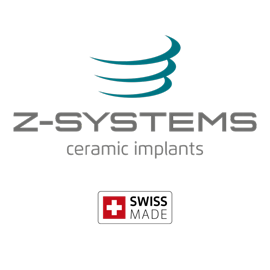Tooth loss can be a serious blow to your confidence, health and ability to eat. But hey, it happens to almost everyone as we get older. Fortunately, there are multiple options for replacing missing or decaying teeth. However, not all tooth replacement solutions are created equally. Let's take a look at the pros and cons of the top three tooth replacement procedures.
Removable Partial Denture (RPD)
The removable partial denture has been around for ages and is a bit archaic. Think about your grandma's teeth in a glass. It is essentially a denture for someone who has only lost some of their teeth, not all. It is made of plastic, usually with metal clasps that wrap around remaining teeth in order to hold it in place. Now what are some of the pros and cons with the removable partial denture?
Pro: Relatively inexpensive initially
Of all the tooth replacement options, the RPD is the least expensive initially and costs anywhere from a few hundred dollars to a couple thousand dollars.
Con: Gum tissue irritation
The partial denture rests on the tissue and can rub against the gums when talking and chewing. This constant rubbing can create sores that are unbearable.
Con: Hard to chew food
Partials can be somewhat functional, but as they become more mobile over time, food can be difficult to chew and you will miss out on some of the foods you enjoy most. And, food particles can get underneath the appliance and cause pain and they must be taken out and cleaned after every meal.
Con: Bone loss
Ever heard of "use it or lose it?" Well, your jawbone follows this rule when there is nothing engaging it. So, with an RPD the jawbone melts away over time. As more bone is lost, the denture becomes more mobile and causes more pain and annoyance. New research indicates that dentures may actually increase the speed of bone loss!
Con: Only lasts a few years
So, while the removable partial denture is initially inexpensive, that changes after a while. The average partial or denture lasts anywhere from two to seven years before they will need to be repaired or replaced. This means more money.
Traditional Dental Bridge
The traditional dental bridge, also called a 3-unit bridge, has also been around for a long time. The dental bridge is very common and has been a benefit to many people. A bridge requires the shaving down of the two teeth next to the missing tooth. Next, the bridge is glued onto the two shaved down, abutment teeth. What are the pros and cons of a bridge?
Pro: Looks like a natural tooth
One of the biggest benefits of a bridge is that it looks like a real tooth when done properly. And let's be honest, that is a big deal!
Pro: Last for a while
Compared to a denture, a bridge lasts a bit longer. The average dental bridge lasts 7-10 years before needing to be replaced. Some bridges could last much longer if cared for extremely well.
Con: Damage to healthy teeth
Remember when we talked about shaving down the teeth next to the area of the missing tooth? Yeah, those two healthy teeth have to be destroyed to attach the bridge. It seems like it's a shame to destroy 2 perfectly healthy teeth. By the way (or "to add insult to injury"), due to the destruction of the exterior layer of these 2 teeth, they now have a higher risk of decay and failure. If it seems a bit drastic, you may be correct. So, what are the pros and cons of a dental bridge?
Con: Bone loss
Bone loss again? That's right. There is nothing activating that bone from the inside. So, over time, the bone will melt away.
Con: Hard to clean
This is actually a big problem. Because the crowns of the bridge and the pontic or fake tooth are all attached, it is incredibly difficult to clean under and around a bridge. Bacteria attack the two crowned teeth and begin to decay. This is the reason bridges fail and need replacement. And, if there is enough decay, the crowned teeth may be lost completely meaning more expensive dental work. Yikes!
Dental Implant (More Specifically Ceramic Dental Implants Made From Zirconia)
You may not know, but dental implants have been around for decades and have incredibly high success rates. A dental implant is a screw that is inserted into the jawbone in the area of a missing tooth. It actually integrates with the jawbone to become the anchor of a new implant tooth. Most dental implants were made of metal, usually titanium or titanium alloy, and these are still used today. More advanced ceramic dental implants are made from zirconia, which is a naturally white in color, very strong and metal-free. Let's take a look at the pros and cons of a ceramic dental implant.
Con: Slightly higher initial cost
Dental implants cost slightly more than a dental bridge. Implants are going to cost a few thousand dollars and are definitely an investment. Fortunately, there are financing options that can make implants as low as a few hundred dollars a month. Keep reading to find out why ceramic implants are worth the investment.
Pro: Looks like a natural tooth
Ceramic implants are white in color, so not only do they look natural above the gums, there is never any gray metal showing thru the gum tissue. No one could ever tell you had an implant placed.
Pro: Works like a natural tooth
Replacing a lost tooth with a dental implant can give you back 100% of your lost chewing ability! Implant teeth function just like natural teeth, so you can chew that juicy steak without pain or worry.
Pro: Easy to clean and never decays
Unlike a bridge which is difficult to clean, implants are very easy. You brush and floss around an implant like you would with regular teeth. And, ceramic implants will never corrode in the oral cavity. Metal dental implants can actually suffer from corrosion, which can cause major issues.
Pro: Metal Free and Hypoallergenic
Because zirconia dental implants are metal free, they are also hypoallergenic. For those sensitive or allergic to metals, titanium implants are not an option. Fear not, science gave us ceramic implants for a reason!
Pro: Implants can last a lifetime
How long do dental implants last? Well, they can last you the rest of your life if cared for properly. Dental implants commonly last 30 plus years on average and have success rates of 95% and higher. Because of the long life of dental implants, they end up costing less over time!
Now that you have all the information, which one would you choose? A removable partial denture, a traditional bridge or a ceramic dental implant? Well, only one looks and functions like a natural tooth. Only one helps to maintain your healthy teeth and preserves your jawbone. Only one is made to last a lifetime! That's right! The ceramic dental implant is definitely the optimal choice for tooth replacement.





